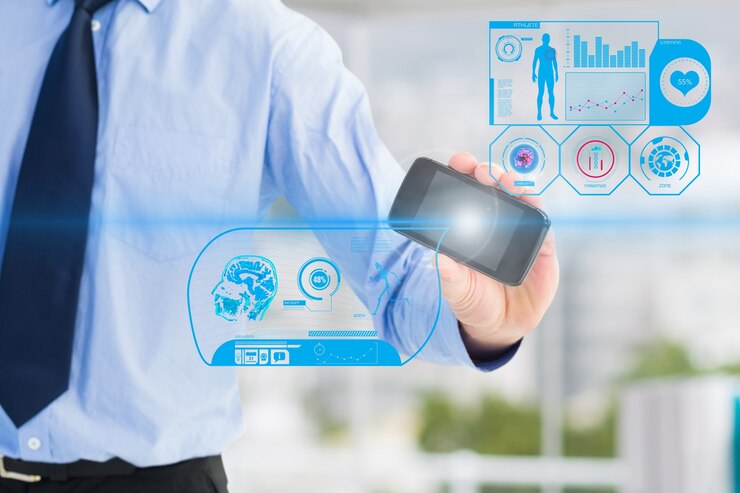IoT in Practice
Have you ever imagined what it would be like if your refrigerator could notify you when you’re out of milk, or if your car could communicate with your phone to remind you to refuel? These are some examples of how the Internet of Things (IoT) can turn your everyday objects into intelligent and connected devices.
IoT is a technology that allows connecting anything to the internet, from household appliances to industrial machines. This connection enables the exchange of data between objects and the systems, platforms, and applications that control them. Thus, it is possible to monitor, automate, and optimize various activities and processes.
But how does IoT work in practice? What are the benefits and challenges of this technology? And how can it impact your personal and professional life? In this article, we will answer these questions and show some real examples of how IoT is changing the world. Stay tuned!
How does IoT work in practice?

IoT operates through a network of sensors, chips, and antennas installed in objects to capture and transmit data over the internet. This data is sent to a server in the cloud, where it is stored and processed by specific software. This software can send commands back to the objects or to other connected devices, such as smartphones, tablets, or computers.
For example, imagine you have a smart light bulb at home that can be controlled by your phone. When you arrive home, your phone sends a signal to the light bulb, which automatically turns on. If you want to change the color or intensity of the light, you just need to use an app on your phone that communicates with the bulb over the internet.
Another example is an industrial machine equipped with sensors that measure temperature, pressure, and energy consumption. These sensors send this information to cloud-based software, which analyzes the machine’s performance and detects potential faults or anomalies. The software can send alerts to operators or maintenance technicians, or even trigger corrective or safety mechanisms.
What are the benefits of IoT?
IoT brings several benefits to individuals and businesses, such as:
- Convenience: IoT allows controlling and automating various everyday objects, such as refrigerators, coffee makers, thermostats, locks, curtains, etc. This simplifies people’s routines and provides more comfort and convenience.
- Efficiency: IoT enables monitoring and optimizing various production, logistical, and administrative processes in companies, such as inventory control, energy consumption, product quality, etc. This reduces costs, waste, and human errors.
- Security: IoT enhances the security of people and material assets through alarm systems, cameras, trackers, motion sensors, etc. This prevents theft, burglary, fires, and other accidents.
- Innovation: IoT enables the creation of new products and services that meet consumers’ needs and expectations, such as autonomous cars, smart homes, wearables, etc. This generates more value and competitiveness for companies.
What are the challenges of IoT?

IoT also presents some challenges that need to be overcome to ensure its success and sustainability, such as:
- Infrastructure: IoT depends on a robust and reliable network infrastructure capable of handling the large volume of data generated and transmitted by connected devices. Moreover, it is necessary to ensure compatibility between different communication standards and protocols used by devices.
- Security: IoT involves the exposure of sensitive and personal data on the internet, which can be targeted by cyber-attacks or misuse by third parties. Therefore, measures such as encryption, authentication, and access control must be adopted to preserve data privacy and integrity.
- Regulation: IoT still lacks specific regulations defining the responsibilities and rights of those involved in its use, such as manufacturers, suppliers, consumers, and public authorities. Therefore, it is necessary to be aware of the laws and regulations in force in each country or region, as well as the ethical and social issues related to IoT.
What are some examples of IoT in practice?
IoT is already present in various sectors and segments of society, such as healthcare, education, agriculture, transportation, retail, etc. Here are some examples of how IoT is being used in practice:
- Healthcare: IoT enables remote monitoring of patients’ health through wearable devices that measure vital signs such as heart rate, blood pressure, glucose levels, etc. These devices can send this data to doctors or patients’ families, or even trigger emergency services in case of abnormalities.
- Education: IoT enables the creation of more interactive and personalized learning environments through devices such as tablets, digital whiteboards, virtual reality glasses, etc. These devices can connect to educational platforms that offer content and activities adapted to each student’s profile and pace.
- Agriculture: IoT enables increasing the productivity and quality of agricultural crops through sensors that measure soil moisture, temperature, light, and fertility. These sensors can send this data to systems that control the use of water, fertilizers, and pesticides, or to apps that provide recommendations to farmers.
- Transportation: IoT enables improving mobility and safety in traffic through devices that allow communication between vehicles and between vehicles and urban infrastructure. These devices can send information about traffic, weather, road conditions, etc., or receive alerts about accidents, congestion, roadworks, etc.
IoT is a technology that is revolutionizing the world and bringing numerous benefits to individuals and businesses. However, it also involves some challenges that need to be addressed with responsibility and ethics.
Did you like this topic? See more content about: IoT (Internet of Things)
Source: business and tech





